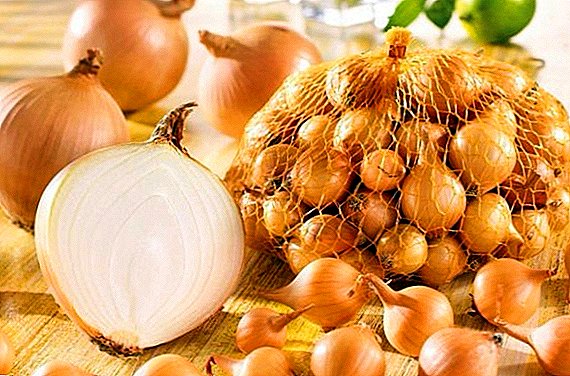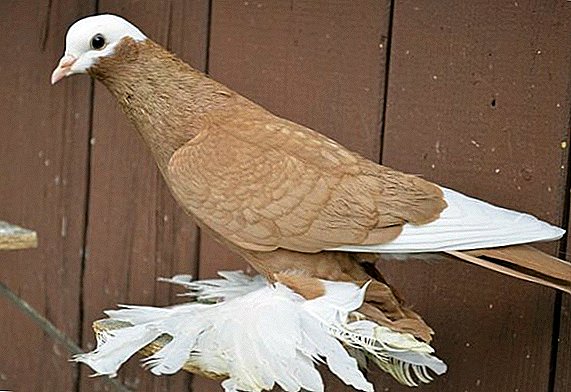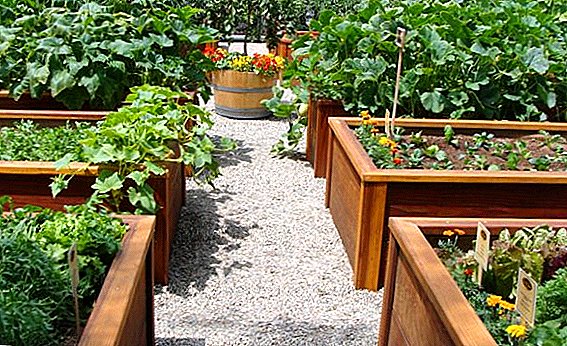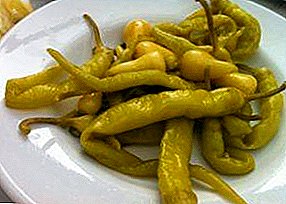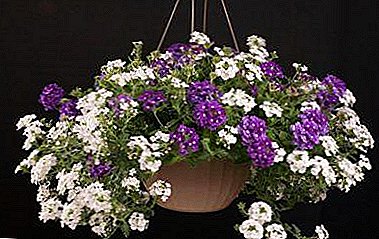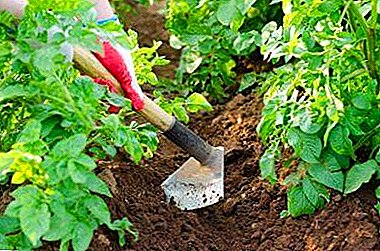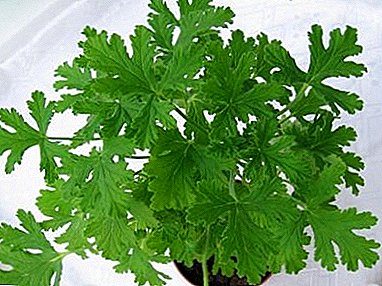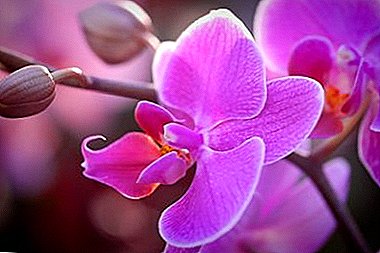
Many flower lovers know that some houseplants need to be cut in the fall so that they gain strength for the next growing season. In certain instances, this procedure is mandatory, in others pruning is carried out under urgent need when it comes to saving a flower. But what about phalaenopsis, is it worth cutting the leaves or not touching it at all.
Plant life cycle
An orchid leaves are the most important organ, due to which it receives air and sunny color. In what condition is the plant, it is mono to determine by the foliage, it will first of all signal the plant's disease, or improper care, and quickly take action.
The life cycle is the alternation of the active vegetative period and the "sleep" of the plant during its entire life. The orchid lives on average up to 7 years. there are instances that continue to grow for a longer period.
 Peace consists of two phases.:
Peace consists of two phases.:
- biological;
- forced.
If we talk about biological rest, it can last from three weeks to six months. At this time, the following processes occur in a plant:
- Growth begins to form.
- Buds are laid - flower and vegetative.
- Orchid accumulates nutrients that will be required during the period of active growth.
If the plant is given inadequate care, then it goes into a period of forced rest, which lasts until the conditions become suitable. During the period of active growth, the plant needs the following:
- maximum diffused sunlight;
- timely watering;
- correct feeding;
- comfortable temperature and humidity.
Reference! The life cycle of an orchid must be taken into account, it depends on the correct care of the plant.
Do I need to remove foliage?
How many experts, so many opinions - some believe that pruning orchid leaves is a mandatory process, others argue that it is strictly prohibited.
When can this be done?
There are flower growers who practice pruning the bottom plates if the orchid does not bloom for more than a year. But do not forget, the more leaves the plant has, the stronger and stronger it is, since it gets good nutrition and recovers faster after flowering (you can learn how to cut orchids after flowering correctly).
Sick
 Sick leaves must be removed, it is necessary if:
Sick leaves must be removed, it is necessary if:
- the foliage has withered and turned yellow;
- burns appeared on them;
- there are damage and cracks on the plates;
- parasites appeared.
Conducting pruning orchids can not only reduce the load on the plant, as it tries to recover itself, but also to prevent the spread of microorganisms in other colors.
How to distinguish a healthy sheet plate from the patient?
Recognizing is not difficult even for a beginner orchid lover. A healthy sheet plate looks like this.:
- color is green and uniform;
- the plate itself is elastic;
- no cracks spots and putrid formations;
- from the inside there are no pests.
Diseased leaves look like this:
- sluggish and wrinkled;
- cracked and damaged;
- on them are spots and yellowness;
- non-uniform color and the presence of parasites.
If the plant has at least one of the above signs, it is a signal to action, the orchid is seriously ill.
Effects
In the case of pruning, negative consequences can occur:
- Rotting slice due to infection. This can be avoided if the procedure is carried out with a sterile instrument and the wound is treated with an antiseptic - activated charcoal or ground cinnamon.
- Weakening orchids. With the loss of a large amount of foliage, the plant becomes weak from the fact that it receives fewer nutrients and sunlight. As a result, the flower may simply die.
Reference! If you do everything right, then your beauty will not be threatened, and she will delight you with bloom for a long time.
Step-by-step instruction
Orchid leaves need to be trimmed correctly. For a start, prepare everything you need.
Preparation of tools
 May need:
May need:
- gloves;
- pruner;
- disinfector;
- activated charcoal or ground cinnamon.
The instrument can be disinfected as follows.:
- Wipe with alcohol.
- Hold in chlorine solution.
- Prepare a solution of potassium permanganate.
Search for the cut point
Before pruning, inspect the orchid, it may be emerging children. If it was found that there are awakened buds, then it is necessary to delay the trimming. The only exception can be a disease of the flower.
Pruning plants
If there are no shoots on the orchid, you can begin pruning, which is carried out in two ways:
- The sheet must not be removed under the root; a stump of 1 cm must remain. Cut off the plate with sterile scissors. In case of a leaf plate disease, it is enough to cut only the damaged area, retreating 15 mm. In this case, the healthy part of the leaf will nourish the plant.
- If you need to update the plant, cutting the bottom healthy leaves, you should do the following. Use a sterile instrument to cut the plate in the middle line. Then tear it to the very stem and remove both halves from the plant. Do not water the orchid for several days.
As soon as the lower leaf plates are trimmed, the orchid can throw out the arrow.
To learn how to cut orchid peduncle correctly after flowering and whether it should be done, read here.
Watch the video, how to trim the orchid:
Treatment
As soon as pruning is done - the wounds need to be processed. They are carefully powdered with ground cinnamon or charcoal. If neither one nor the other is at hand, then you can crush a tablet of activated charcoal. This will allow the plant to heal quickly. In addition, the infection and pathogenic bacteria will not fall into the wounds.
What if I had to delete everything?
Full pruning is carried out for various reasons, for example:
- violation of the rules of content;
- wrong watering mode;
- disease - often root decays.
To decide on a complete trimming of leaves, you need only after an accurate diagnosis is established.
If it was found that the orchid is completely affected by rot, then throw out the plants without sparing - so as not to expose the rest of the flowers to danger.
There are certain diseases in which you have to completely cut off the foliage:
- Brown rot - there are watery and light brown spots.
- Black rot - black spots on the leaves, the cause may be attacks of parasites and low temperature.
- Root rot - leaves appear brown spots, the roots begin to rot.
 Fusarium rot - leaves turn yellow.
Fusarium rot - leaves turn yellow.- Gray rot - there are grayish-dark spots on which the fluff is observed.
- Spotting - leaves start to fade, soften, gradually turn black.
- Anthracnose - small brown spots with smooth edges appear on the leaf plate. If the disease is not treated, then the spots grow on the whole leaf and the plant dies.
- Mealy dew - Whitey powdery appearance appears on the plates. The leaves will begin to bind and dry - this disease leads to the death of the plant.
Care
Once the plant is sick, you need to inspect the roots, as they can be affected by rot. The flower is removed from the pot, remove the old substrate and rinse the root system. Dry the plant and cut off diseased foliage and roots.
- If there are only a few roots left, then the plant can be saved by planting it in a new substrate, but orchid care must be very thorough.
- Place the plant on the western or eastern sill, while ensuring that it does not fall into direct sunlight.
- The air temperature is 30-33 degrees in the daytime, and 20-25 at night.
- Avoid drafts.
- The first time you just need to spray the plant, watering begin about 14 days.
If there are no roots left, then you can try to grow a new root system by planting the plant in wet moss.
Reference! After the orchid leaves have been cut, it is worthwhile to leave it alone for a while so that it begins to recover on its own.
Proper orchid care requires experience and knowledge. At the same time there are many factors that can not be overlooked. If you are a beginner florist, you should read the necessary information or consult with experienced florist. Despite the fact that the orchid is a very capricious plant, its beauty is worth the time spent on caring for it.
Conclusion
During the entire life cycle, which is equal to seven years, the plant grows, develops, pleases its owner with beautiful flowers. You can extend the life of the plant by updating its root part - cut the bottom plate. If the plant is sick, then with the right actions and care it can be saved - by cutting off the diseased areas.
Despite the fact that many consider pruning of orchid leaves unacceptable, experienced growers note the fact that after competent removal of old foliage, the orchid begins to grow better, grows faster and blooms with larger flowers.


 Fusarium rot - leaves turn yellow.
Fusarium rot - leaves turn yellow.